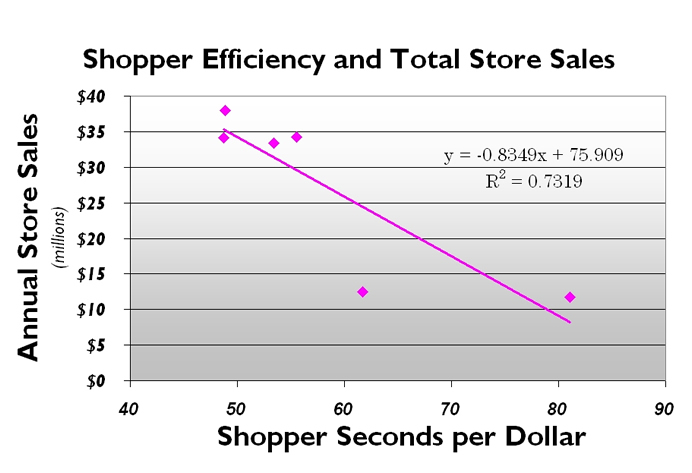We have defined efficiency as the number of seconds it requires for a shopper to spend a dollar, Euro, Baht, or what-have-you, in the store. The fewer seconds, the greater the efficiency. But, so what? Don't shoppers enjoy shopping? The short answer is . . . yes . . . and no. In an earlier Views, we showed the relationship of aisleness to shopper seconds, and recommended reading our white paper on The Three Shopping Currencies. Here we want to give evidence in favor of
Sorensen's First Rule of Retailing: The faster you sell, the more you will sell!
This is of course an empirical generalization, that applies to stores with similar classes of merchandise and generally designed and merchandised similarly. So here's the data:

This sample of stores was selected to be of a similar size and store design. Of course the real issue here isn't that there is a general relation between efficiency and sales, but how to increase efficiency (decrease shopper seconds per dollar) in order to increase sales?
In fact, total dollars (and margin) per total store shopper seconds is a good measure of the performance of a store overall, but the principle can be applied to subunits of the store, down to individual brands and items. This last fact is very good news indeed for the brands, since there is little they can do about the total store, but potentially a lot that can be done for their own portfolio.
This is one example of identifying a "new metric" that is far more useful than traditional metrics. The white paper mentioned above provides more detail on application of the principle. I expect to launch, soon, a world-wide search for the stores and practices that leverage the rule above, whether wittingly or unwittingly, by retailers or brands.


